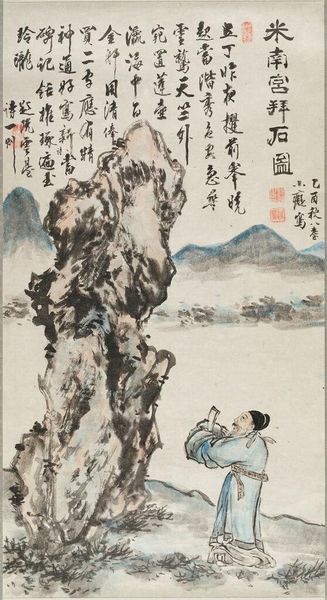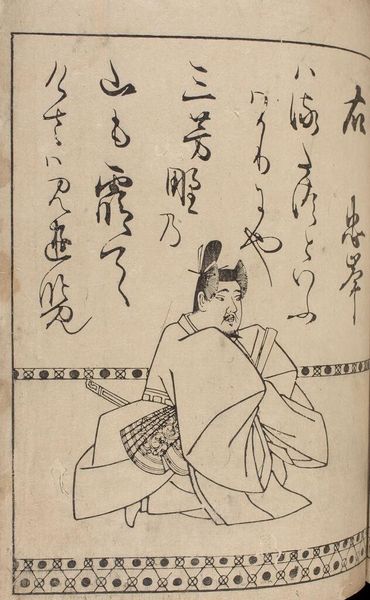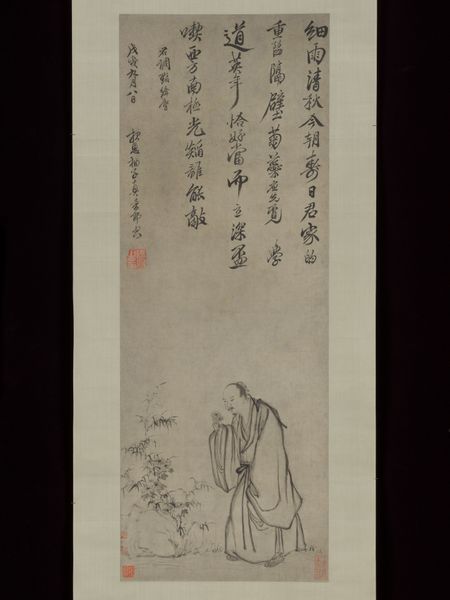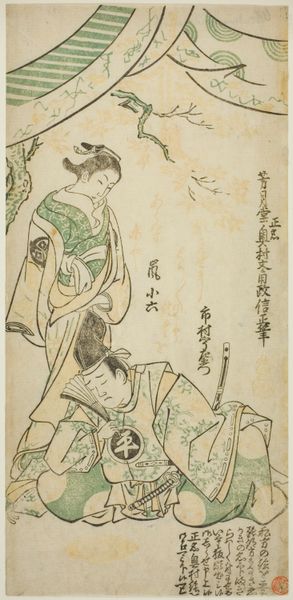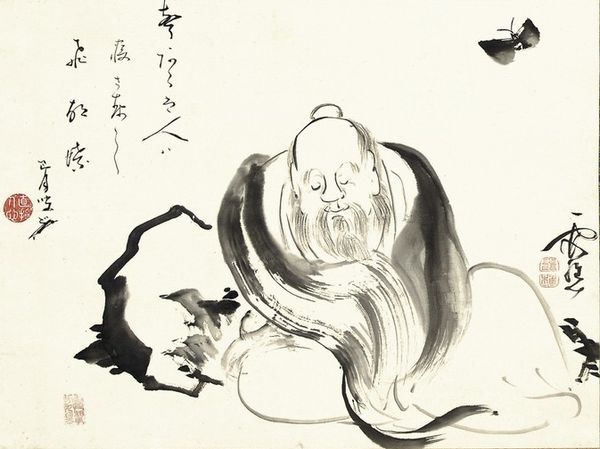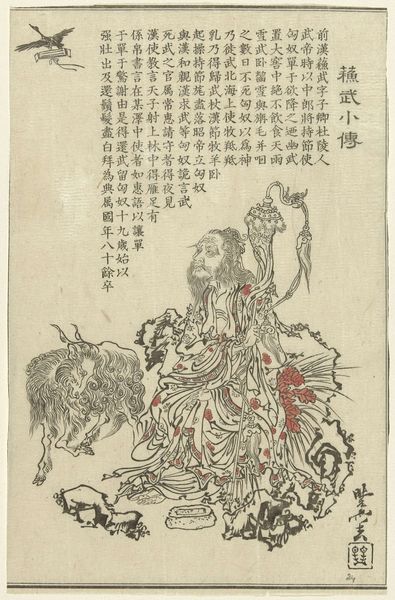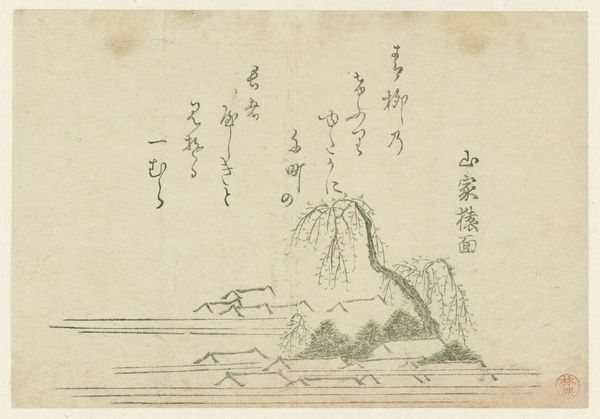
#
gutai
Copyright: Kazuo Shiraga,Fair Use
Curator: Oh, I find this image so delicate, like a whisper on paper. Editor: Yes, it feels incredibly immediate. I’m drawn to the monochrome palette; it’s like a memory surfacing in shades of gray. What can you tell me about it? Curator: This is "Rihaku" by Kazuo Shiraga, rendered in ink in 1987. It presents a figure afloat amid floating leaves with text above the illustration. It's interesting to see the way that Shiraga, so famous for action painting, incorporates the Asian art historical motif of calligraphy here. Editor: Calligraphy, exactly. See how the lines of text above almost mimic the swirling, loose brushstrokes of the water and lotus leaves? It creates a rhythmic pattern. Is there a story behind this, a cultural myth maybe? Curator: This composition evokes the themes common to the Ukiyo-e style: figures in a landscape. "Rihaku" refers to Li Bai, the famous Tang Dynasty poet. Bai was a larger-than-life figure, who allegedly drowned while trying to embrace the moon's reflection in a river, intoxicated of course! He often appears in art from this period. Editor: Intoxicated by the moon, how romantic! It gives this simple sketch such depth. The way the figure seems to melt into the lotus leaves and water, you can almost feel a sense of surrender, a willing embrace of something greater than himself. Curator: Shiraga's work after his Gutai period shifted significantly toward spiritual reflection, particularly informed by Buddhist and traditional Asian philosophies. So the blending you observe feels intentional, that merging of self with nature is quite integral to his later style. Editor: The symbolism enriches this. I appreciate how Shiraga's ink, typically forceful in his action painting, softens and diffuses in the lotus pond. The lotus represents purity and enlightenment, correct? The symbolism of life. Curator: Absolutely, and perhaps hinting at the journey towards transcendence, even through something as tragic as an accidental drowning. In this rendering of a tragic ending, the symbol of enlightenment rises up from the depths of legend. It’s poignant, almost hopeful, really. Editor: Definitely. Seeing this intersection, the personal, artistic style and broader cultural symbols… it allows us to appreciate Kazuo Shiraga as a bridge between worlds. It shows, through form and legend, that the internal reflects a greater scope. Curator: That feels absolutely right, a beautiful synthesis of grand themes, yet with this incredibly gentle hand.
Comments
No comments
Be the first to comment and join the conversation on the ultimate creative platform.






